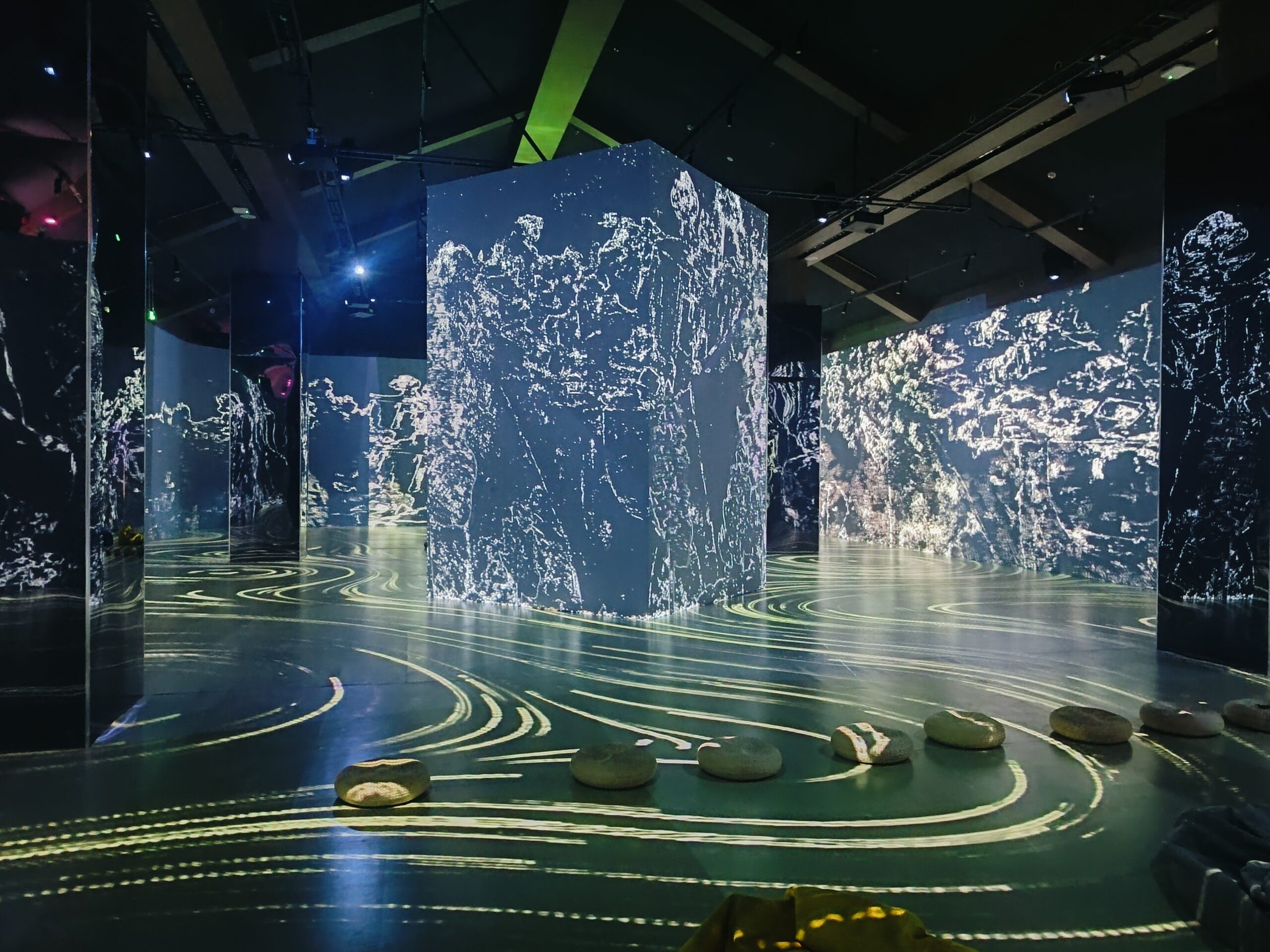Art has always been a medium for human connection and expression, but what if you could literally step into a painting? The Immersive Starry Night Art Museum Experience offers just that—an opportunity to walk inside Van Gogh’s world-famous “Starry Night” and feel the texture, light, and emotion of the painting all around you. This museum is no ordinary gallery; it’s a multi-sensory adventure powered by cutting-edge technology, specifically designed to immerse visitors in one of the most iconic artworks of all time.
The Vision Behind the Immersive Van Gogh Starry Night Art Museum Design
Creating a Multi-Sensory Experience
The design of the Immersive Van Gogh Starry Night Art Museum was conceived with one primary goal in mind: to create a fully immersive experience that goes beyond traditional art viewing. The creators wanted to take the static image of “Starry Night” and transform it into a living, breathing environment that engages all of the senses.
To achieve this, the museum employs a variety of innovative techniques, including dynamic projections, synchronized soundscapes, and even tactile elements that allow visitors to “feel” the painting’s textures. The result is a 360-degree art experience that captivates audiences, offering them an entirely new way to engage with Van Gogh’s masterpiece.
The Role of Technology in Art
Technology plays a crucial role in bringing this vision to life. Advanced projector systems, designed specifically for the exhibit, allow for precise mapping of Van Gogh’s brushstrokes onto large surfaces, making the painting appear as though it is moving and changing before your eyes. The use of emulator software ensures that these projections remain true to the original artwork, preserving the color accuracy and details that make “Starry Night” so iconic.
The combination of art and technology in this way not only enhances the viewing experience but also opens up new possibilities for how we understand and interact with visual art.
Immersive Starry Night Art Museum Projector Software: The Heart of the Experience
How Projector Software Brings the Artwork to Life
At the core of the Immersive Starry Night Art Museum Experience is its state-of-the-art projector software. This software is not just about displaying images on walls; it’s designed to create a seamless, fully immersive environment that draws visitors into the world of Van Gogh.
The projector software is responsible for controlling the movement, scaling, and positioning of the artwork as it’s displayed across multiple surfaces within the museum. It’s calibrated to work in harmony with the museum’s architecture, ensuring that every corner of the exhibit space is utilized to its fullest potential. Visitors are not just looking at “Starry Night”—they are surrounded by it, with the painting extending across walls, floors, and ceilings.
Precision and Customization
What sets this software apart is its ability to precisely emulate the texture and depth of Van Gogh’s original brushstrokes. By using advanced algorithms, the software ensures that the projections are both dynamic and true to the original composition. This level of precision allows for a truly immersive experience, where visitors feel as though they are stepping into the painting itself.
Moreover, the software is highly customizable, allowing for different modes of display and interaction. This flexibility makes it possible for the museum to continuously update and enhance the exhibit, keeping it fresh and engaging for returning visitors.

Large Interactive Art Museum Starry Night Projection: A New Frontier in Art Engagement
Interactive Elements that Engage the Senses
One of the standout features of the Immersive Starry Night Art Museum Experience is the Large Interactive Art Museum Starry Night Projection. Unlike traditional art exhibits, where interaction is limited to viewing the artwork from a distance, this experience invites visitors to engage with the painting in a more tactile and immersive way.
The interactive projections are designed to respond to the presence and movements of visitors, creating a dynamic environment that changes in real-time. For instance, as you walk closer to the projected image, the stars in “Starry Night” might begin to twinkle more brightly, or the swirls of the night sky might start to move faster. These interactions are carefully designed to enhance the emotional impact of the artwork, making the experience more personal and memorable.
Bridging the Gap Between Art and Audience
By incorporating interactive elements, the exhibit bridges the gap between the artwork and the audience, making the experience more inclusive and engaging. It’s not just about looking at a painting; it’s about becoming part of it. This approach is particularly effective in drawing in younger audiences and those who might not typically be interested in traditional art exhibits.
The use of large-scale projections also allows for a level of detail and immersion that simply isn’t possible in a traditional museum setting. Every brushstroke, every swirl of paint is magnified and brought to life, offering visitors a new perspective on Van Gogh’s work.
How the Immersive Starry Night Experience Changes Traditional Museum Visits
A New Standard for Art Exhibitions
The Immersive Starry Night Art Museum Experience represents a significant departure from traditional art exhibitions. By leveraging technology to create a fully immersive environment, this exhibit sets a new standard for how we experience and engage with art.
Gone are the days of silent, static galleries where visitors passively observe paintings from behind a rope or glass barrier. Instead, this experience invites visitors to actively participate in the artwork, making the visit not just educational but also deeply personal and emotionally resonant.
The Impact on Art Education
This immersive approach has significant implications for art education as well. By making art more accessible and engaging, the exhibit helps to break down barriers to understanding and appreciating fine art. It offers a hands-on, experiential learning opportunity that is likely to resonate with a wide range of audiences, from school groups to seasoned art aficionados.
Moreover, the use of technology in this way opens up new avenues for exploring and understanding art history. Visitors can gain insights into Van Gogh’s techniques and creative process in a way that is both informative and engaging, making the experience as educational as it is entertaining.
The best way to experience the Immersive Starry Night Art Museum is to take your time and fully engage with the exhibit. Allow yourself to become immersed in the environment and interact with the projections as much as possible. It’s also a good idea to visit during off-peak hours to avoid crowds and get the most out of the experience.
The technology behind the exhibit involves advanced projector software and interactive elements that are designed to create a fully immersive environment. The software is responsible for mapping the artwork onto the museum’s architecture, while the interactive projections respond to the presence and movements of visitors, creating a dynamic and engaging experience.
Yes, the exhibit is designed to be accessible and engaging for visitors of all ages. The interactive elements are particularly appealing to younger audiences, while the educational aspects make it a valuable experience for visitors of all ages.














